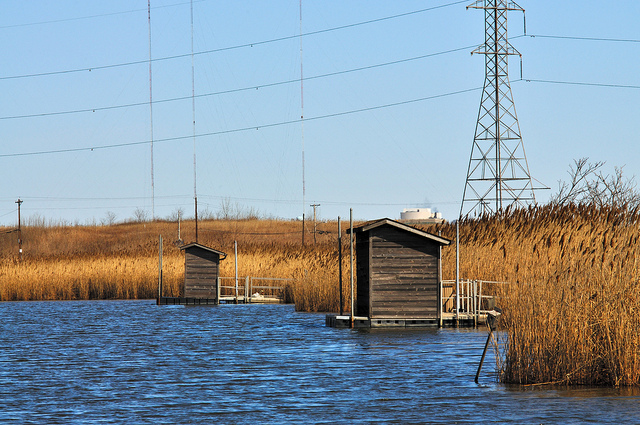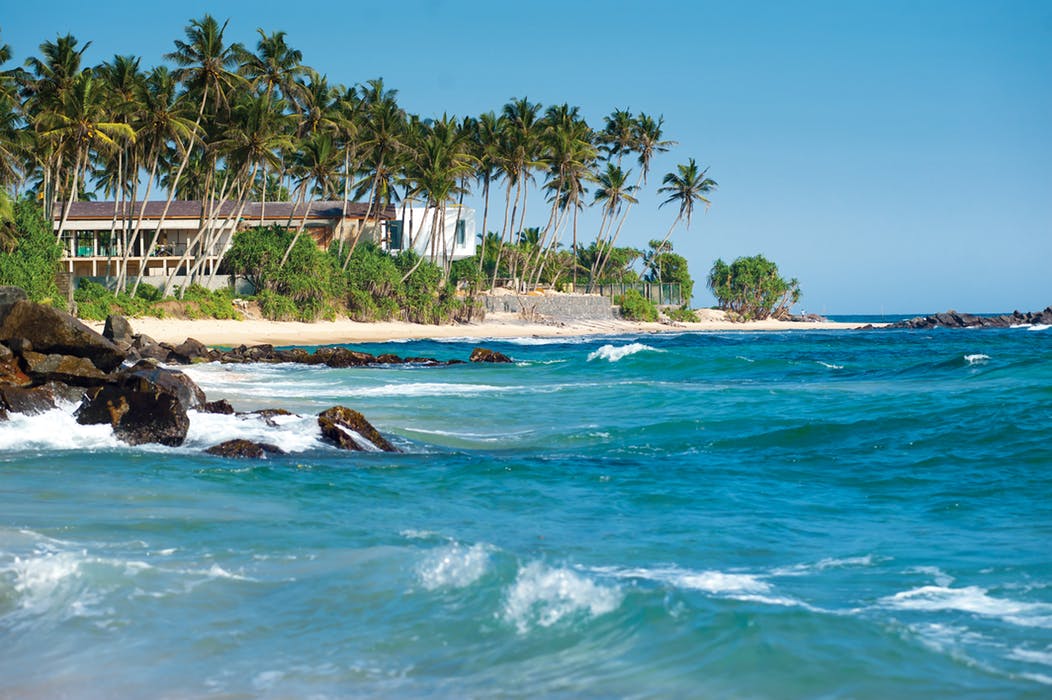

Our planet has an abundance of water. Although this life-giving liquid covers seventy percent of the earth’s surface, approximately ninety-seven percent of it is ocean water unfit for human consumption. With water supply decreasing as demands are increasing, practical long-term solutions are required. I believe water desalination plants will be a large part of that solution.
Water is necessary for every living organism in our little chunk of the universe. An increasing problem as the human population swells and wanders is a shortage of drinkable water; however, water is not just for drinking and domestic purposes, it is also used in very large volume for commercial purposes across the industry, power plants, and in the agriculture sector. It is projected that water demand is likely to rise by fifty-five percent between the years 2000 and 2050 (Smedley, 2017).
The practice of desalination, removing salt from the sea water, might solve ever-growing water shortages. Our own fair state of California, the third largest state in the U.S., faces frequent droughts that can last several years. Last winter’s record-setting precipitation provided much-needed relief to our state, ending the five-year drought that had put a major strain on industry, farmers, and the general population alike as increasingly stringent measures were enacted to stretch water resources as much as possible. Although California’s population is growing at a slower rate than many other states, the density of its population, combined with the parched climate in the southern part of the state, has created pressure on authorities to come up with innovative methods of supplying water efficiently.
California’s long droughts have added to the decreasing level of aquifers which are receding at the alarming rate of 16 million acre-feet per year and the drying-up of nearly 19,00 wells. Even the record-setting rainfalls of last winter weren’t enough to replenish the aquifers. According to NASA’s senior water scientist, Jay Famiglietti: “… it would take four years of above-average rainfall in California for that to happen. And even then, California will still be losing water [because the] state simply does not have enough water to do all the things that it wants to do” (Smedley, 2017).
The daunting problems of rising water demand, frequently low levels of precipitation, and depleting aquifers could be greatly mitigated by desalination; however, the high costs of installing desalination plants, both economic and ecological, must be recognized and clear precautions should be taken before adopting desalination as the ultimate solution to the frequent droughts and water shortages in California.
Desalination Technology and Process
Desalination is increasingly being looked at as a viable alternative technique for providing drinking water. As water demand is growing worldwide, there is a need for innovation in supplying water that is more scalable than more minor efforts such as water recycling and storing rainwater. The desalination Process currently only provides about one percent of drinking water, but its increasing every year.Desalinated water is produced from brackish water and seawater. The former has low salt content, less than 10,000 mg per liter, while the latter has a high salt content, ranging from 30,000 to 44,000 mg per liter. However, brackish water is not as readily available as sea water, so desalination is mostly done with sea water. The advantage with seawater desalination is that the source is so abundant (Voutchkov, 2016).
Nearly half of the world’s population resides in shoreline areas like we enjoy here in California: those areas include the Middle East, Northern Africa, Australia, and many islands. Desalination could be a great solution for helping many regions meet their water demands.
The total desalination plants around the world are estimated to be approximately eighteen thousand with a production capacity of 22,870 million gallons per day.The highest current level of desalinated water production, with forty-four percent, is from the Middle East and North Africa region; however, Asia, the U. S, and Latin America are barking at their heels and expected to see the high desalination development over the next decade.
Two basic technologies are used for desalination of salt water: thermal evaporation and membrane separation. Seawater reverse osmosis (SWRO) membranes are the most used desalination technology all over the world except the Middle East. This region is attracted to thermal evaporation because it is suitable for that area with its access to lower-cost fuels; still, SWRO membrane technology dominates because of its advancement with increasing capacity at lower costs. During the last two decades, a combination of factors has led to a reduction in costs and higher adoption: these include, building higher capacity plants, locating desalination plants near to power plants, and a high degree of competition from the Build-Own-Operate-Transfer (BOOT) method of project delivery, and further advancement of the SWRO technology (Voutchkov, 2016).
Here in the Golden State, the Carlsbad desalination plant, serving San Diego County, was opened in December 2015 and produces fifty million gallons of desalinated water per day. It was built by Poseidon Water, a water project development company. Poseidon has proposed building another plant in Huntington Beach, but the project is on hold because it lacks the proper permits to start construction. Poseidon has used SWRO membrane technology in the Carlsbad desalination plant and plans to use SWRO at the Huntington Beach plant as well, which is also slated to produce fifty million gallons per day at a cost of three hundred and fifty million dollars. Poseidon has the support of the Orange County Water District for the Huntington Beach plant, but the permits have yet to be issued by the California State Lands Commission, Regional Board, and California Coastal Commission (Water. desalination + reuse, 2016).
Although the membrane technology will be used at the Huntington Beach plant, more efficient and innovative thermal membrane technologies are being developed every few years. Otay Water District, San Diego, wants another desalination plant to be installed in Mexico. The price of the water is expected to be half from the Mexican plant than the Carlsbad Plant, says the Water Desalination Report. California has lived under the tyranny of severe droughts for many years, and these plants are expected to provide ample amounts of water to help meet the water demand and add a counterbalance to the negative impact of the water shortage (Rivard, 2017).
Costs and Environmental Issues
Both the Carlsbad desalination plant and new Huntington Beach plant, have received much criticism from environmentalists because of negative effects on marine life and air pollution caused by greenhouse gas emissions. The desalination process takes two gallons of seawater to produce one gallon of desalinated water. A concern to environmentalists is a residue called brine.Brine is produced as a byproduct of the desalination process and causes serious impacts to marine life. This highly concentrated salty residue is usually dumped back into the ocean and is toxic to the bottom marine life, causing oxygen deficiency called hypoxia. (State of California, 2017)
Seawater intake is another issue of concern. Marine life, such as fish and crabs dying during the water intake is called impingement, and when smaller organisms like fish eggs and plankton die during water intake, it’s called entrainment (Nagappan, 2017).
A major expenditure of money is required to develop a desalination plant along with high energy supply for it to function. According to a 2013 Pacific Institute report, 15,000 kilowatt-hours of power are required to desalinate one million gallons of seawater. This number is double that of recycling wastewater. The biggest share of the desalination plant’s operating costs, nearly fifty-five percent, is from energy costs. In addition, the greenhouse gas emissions from desalination plants are high, which contributes further to global warming and climate change (Nagappan, 2017).
Regarding environmental impact and excessive energy consumption, California State Water Resources Control Board approved an amendment on May 06, 2015 for protecting the ocean waters of California. The Regional Water Board needs to give permission for developing desalination plants in accordance with this amendment, which also states implementation, monitoring, and reporting requirements. This amendment was developed after years of scientific research by studying the plant’s effects on marine life in an effort to develop best practices. It was peer reviewed for evaluating the conclusion’s effectiveness (The State of California, 2017).
These environmental issues and higher power consumption can be controlled if proper precaution is taken. Subsurface water intake is suggested instead of surface water intake so that the bottom-surface dwellings don’t get stuck on the intake screen. SolRio, a nonprofit, whose mission is to help manage the effects of droughts and climate change, has put forward some plans to tackle the environmental issues and power consumption. It has been suggested tapping the solar energy from multiple power stations for powering the desalination plants. This could be a sustainable source of power for such plants and reduce the cost of energy. As for brine, it could be dispersed far from the shores using long pipes; however, Poseidon along with the California Coastal Commission evaluated the suitability of sub-surface water intake in Huntington Beach and found that it is not feasible because of high waves. They’ve adopted a concept for water intake called wedge wire water intake. The Huntington Beach plant has yet to receive its permit. They are hoping to receive it by the end of 2017, so they can start the development process and compete head-to-head, with the Carlsbad desalination plant (Water. Desalination + reuse, 2016).
Conclusion
After researching the process of desalination and weighing the pros and cons for California and elsewhere, it appears to me that it could be a very practical and effective process for meeting rising water demands, but at any cost: water pollution, greenhouse gas emissions, and high power consumption. These costs could be mitigated with input from the various stakeholders. The use of this technology, if managed with oversight that has an eye to ecological safeguards, will be an effective tool in battling water scarcity.
Sources
Water. desalination + reuse. (20016, November 23). Huntington Beach is precedent setting for California. Retrieved September 02, 2017, from https://www.desalination.biz/news/3/Huntington-Beach-is-precedent-setting-for-California/8604/
Nagappan, P. (2017, March 03). How desalination plants are trying to overcome environmental concerns. Retrieved September 02, 2017, from www.newsdeeply.com/water/articles/2017/03/03/how-desalination-plants-are-trying-to-overcome-environmental-concerns
Rivard, R. (2017, June 06). With the drought waning, the future of desalination is murkier. Retrieved September 01, 2017, from http://www.voiceofsandiego.org/topics/science-environment/with-the-drought-waning-the-future-of-desalination-is-murkier/
Smedley, T. (2017, April 12). Future – is the world running out of fresh water? Retrieved September 02, 2017, from http://www.bbc.com/future/story/20170412-is-the-world-running-out-of-fresh-water
State of California, Department of water rescources. (2017, May 06). State water board addresses environmental concerns in new desalination facility standards [Press release]. Retrieved September 02, 2017, from https://www.waterboards.ca.gov/press_room/press_releases/2015/pr050615_desal.pdf
Voutchkov, N. (2016, August 17). Desalination-Past, present and future. Retrieved September 01, 2017, from www.iwa-network.org/desalination-past-present-future/



